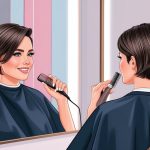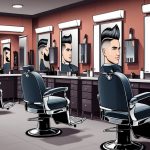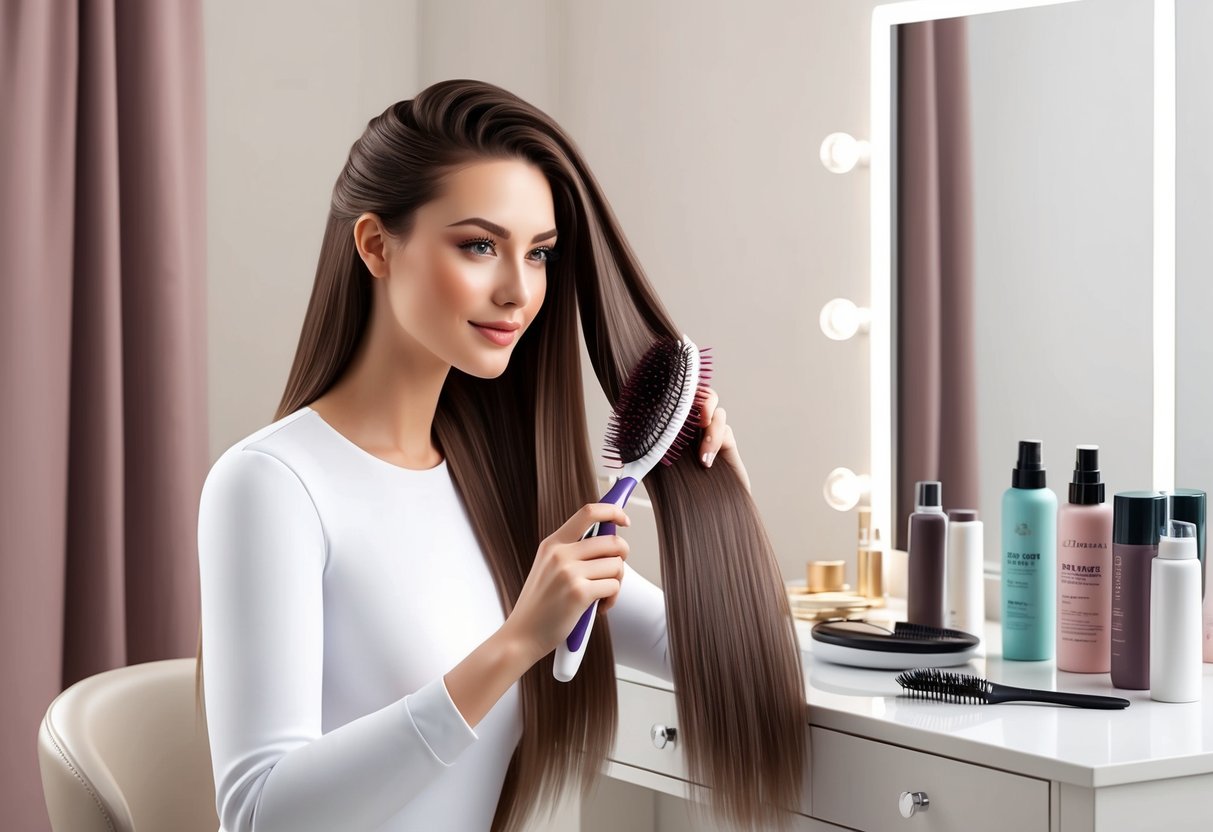
Caring for Different Hair Textures
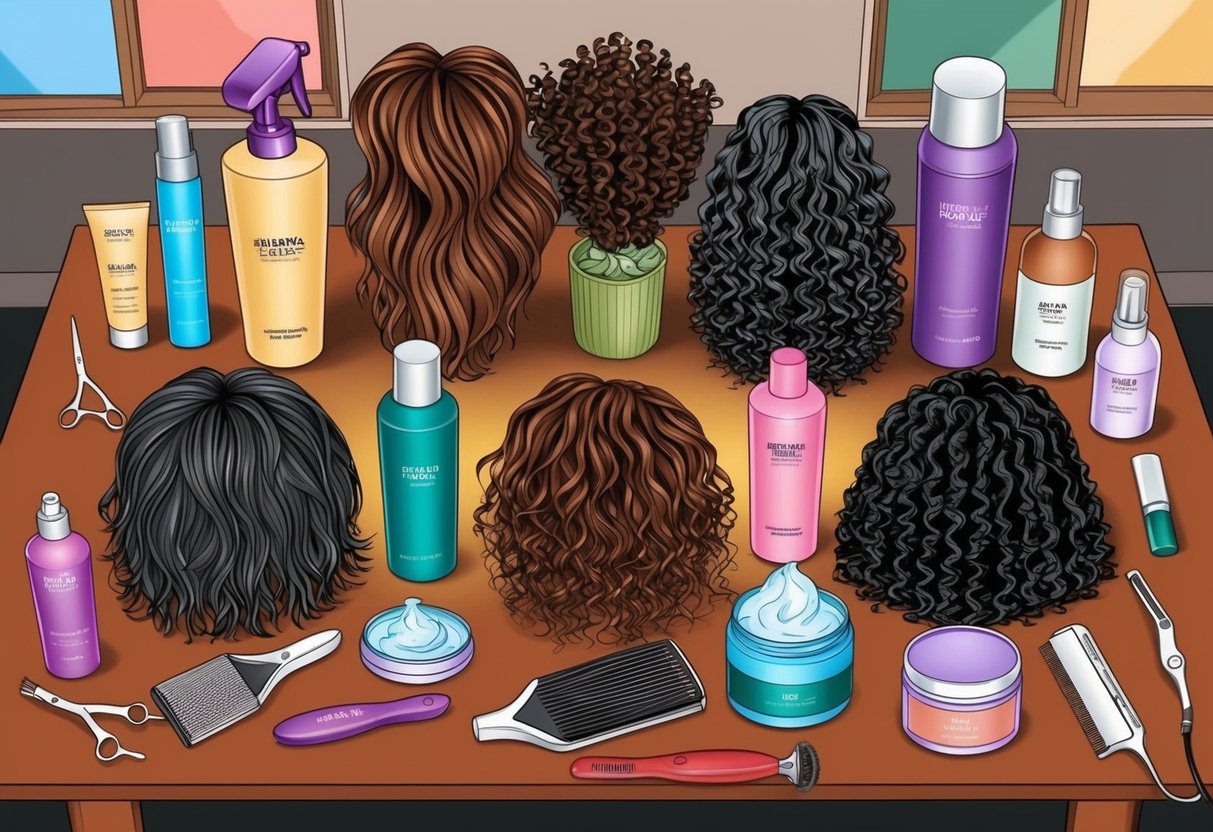
Hair texture greatly impacts how each person should wash, style, and maintain their natural hair. Routine adjustments and the choice of products can make a visible difference in hair health and appearance.
Customizing Routines for Fine vs. Thick Hair
Fine hair tends to become oily and weighed down by heavy products. Lightweight conditioners, clear shampoos, and occasional use of a clarifying shampoo can prevent buildup.
For added volume, those with fine hair should blow-dry with a round brush or use dry shampoo at the roots. Thick hair, on the other hand, benefits from richer creams and leave-in conditioners.
It is prone to dryness, so deep conditioning treatments and natural oils like argan or coconut are effective for moisture retention. Thick-haired individuals can use wide-tooth combs to detangle without damage and may require less frequent washing due to slower oil distribution.
Quick Comparison Table:
| Hair Texture | Key Need | Best Products | Styling Tip |
|---|---|---|---|
| Fine | Volume, lightness | Lightweight, clarifying | Blow-dry with round brush |
| Thick | Moisture, control | Rich creams, oils | Wide-tooth comb, deep-condition |
Understanding the Needs of Curly and Wavy Hair
Curly and wavy hair textures need extra hydration to combat dryness and prevent breakage. Regular use of leave-in conditioners and curl creams helps define curls and reduce frizz.
Curly hair should not be brushed when dry, as this can cause breakage; instead, use fingers or a wide-tooth comb when it’s damp. Heat styling can damage curl patterns, so it is best to air dry or use a diffuser attachment with a blow dryer.
To keep hair hydrated, satin or silk pillowcases reduce overnight moisture loss and help maintain curl shape. Applying a lightweight styling gel or mousse can also define curls without leaving hair stiff, as discussed in guides for caring and styling your hair type and tips on luscious hair for every hair type.
Regular trims help manage split ends for all curl patterns.
Special Considerations for Natural Hair and Locs
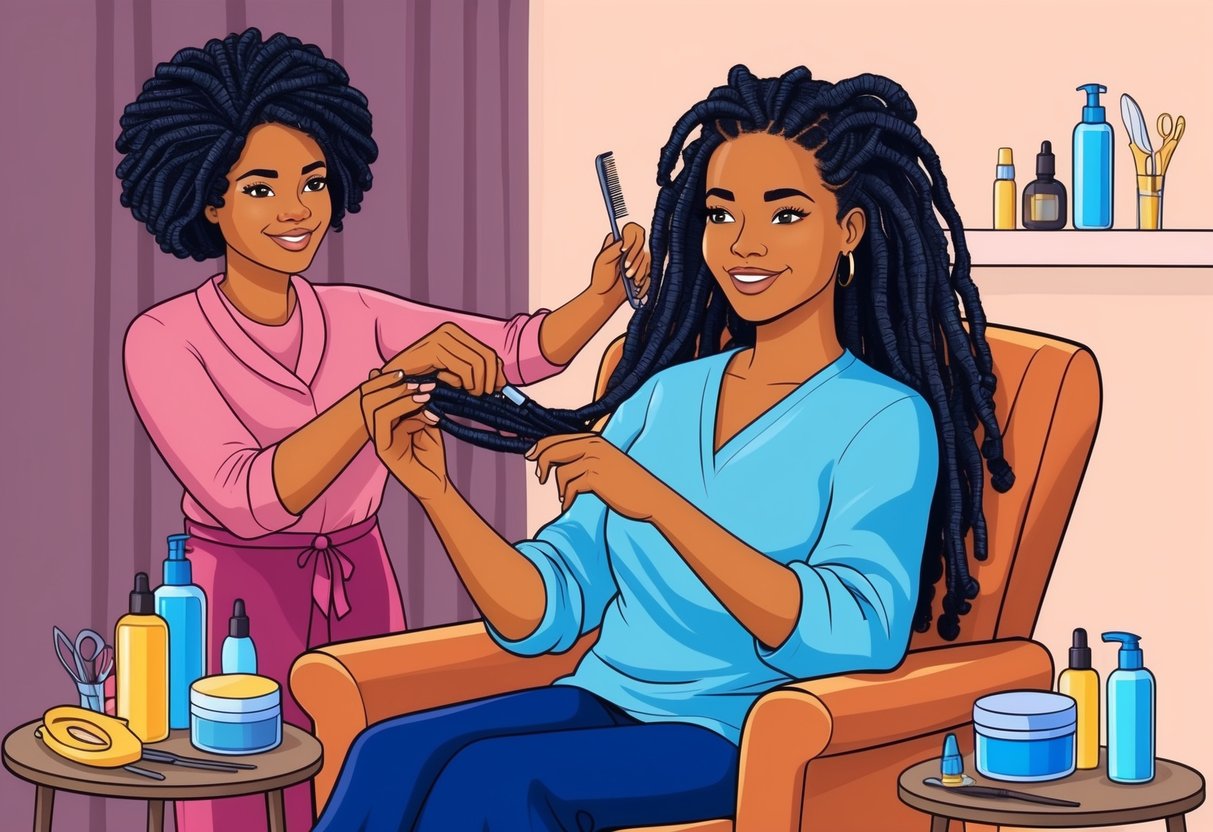
Natural hair and locs have unique requirements, especially when it comes to moisture and proper maintenance. Attention to both daily care and long-term routines is crucial for maintaining healthy, beautiful hair.
Managing Moisture in Natural Hair
Moisture retention is a top priority for natural hair due to its curly or coily nature, which makes it more prone to dryness. The structure of natural hair strands causes oils produced by the scalp to travel less efficiently down the hair shaft.
Because of this, regular hydration is essential. Using leave-in conditioners, hydrating sprays, and natural oils like jojoba or castor can help maintain moisture balance.
To avoid product buildup, it’s important to choose lightweight formulas and clarify the scalp as needed. Protective styling, such as braids or twists, reduces manipulation and breakage while locking in moisture.
A simple routine might include:
- Washing with a gentle sulfate-free shampoo
- Deep conditioning weekly or biweekly
- Sealing in moisture with a light oil or cream
Satin bonnets or pillowcases help reduce friction and moisture loss during sleep, keeping hair softer and healthier over time.
Best Practices for Maintaining Locs
Locs benefit from a routine that balances cleanliness and moisture while minimizing product use. In the early stages, locs require more attention and frequent retwisting to maintain their shape, but care becomes easier as the hair matures.
Regular washing is necessary to avoid buildup, as clean locs are less likely to harbor odor and residue. It’s important to keep the scalp hydrated using light oils such as jojoba or castor oil.
According to experts, less product often leads to healthier locs, so moderation is key. Overusing heavy creams or waxes can attract dirt and weigh the hair down.
A typical loc care routine includes:
- Gentle shampooing every 1-2 weeks
- Moisturizing the scalp and hair with natural oils
- Periodic retwisting to maintain neatness
Occasional deep cleaning with diluted apple cider vinegar or a gentle baking soda rinse can help remove buildup but should not be done frequently, as it can strip beneficial oils. With consistent maintenance, locs will thrive and become stronger with time, as highlighted in this locs care guide.
Advanced Treatments and Professional Care
Long hair often requires more than basic products and home routines to stay healthy, especially when damage or dryness becomes noticeable. Advanced treatments and professional care can help repair, strengthen, and rejuvenate hair for those seeking optimal length and manageability.
When to Seek Professional Help
Individuals should consider professional help when they notice persistent split ends, excessive breakage, or significant thinning. These issues may go beyond what over-the-counter products can resolve.
Salon professionals can identify underlying causes like hormonal imbalances, poorly matched hair products, or scalp health concerns. Regular trims by a stylist help prevent damage from traveling further up the hair shaft.
If hair color treatments or chemical processes have weakened the hair, professionals may recommend personalized solutions such as nourishing treatments or custom protein formulas. Timely consultation can also address scalp irritation, chronic dandruff, and hair loss, which require targeted expert care.
Salon Treatments That Benefit Long Hair
Salon treatments are designed to maintain shiny, healthy hair and prevent long-term damage. Deep conditioning treatments infuse moisture directly into parched strands.
A salon-grade hair mask replenishes essential nutrients lost from heat styling, sun exposure, and environmental stress. Keratin treatments smooth cuticles, reducing frizz and making hair easier to detangle.
Regular salon glossing improves shine for dull hair. Professional scalp treatments help regulate oil and stimulate healthy hair growth.
For those dealing with split ends and breakage, stylists may offer specialized strengthening treatments to fortify hair structure.


